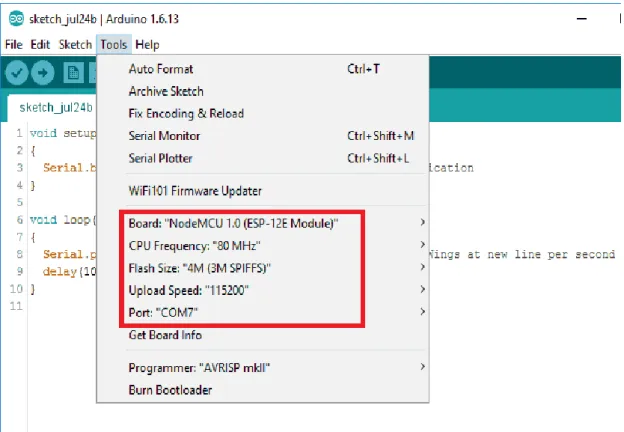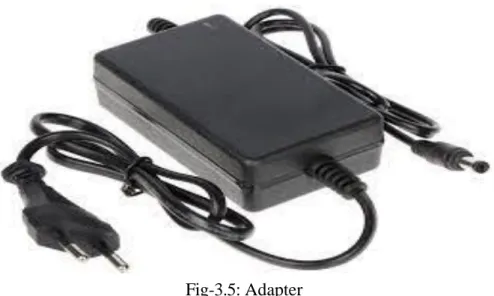Please find enclosed the project report titled "IoT-Based LPG Gas Leakage and Fire Detection with Monitoring and Control System". The study was carried out in partial fulfillment of the requirements for the degree Bachelor of Science in Electrical &. We hereby solemnly declare that the work presented in this report titled ““IoT-based LPG Gas Leakage and Fire Detection with Monitoring and Control System”” has been carried out by us and has not been previously submitted to any other university, college or organization. for an academic qualification, certificate or diploma/degree.
We hereby guarantee that the work presented here does not infringe any existing copyright. We further undertake to indemnify the University against any loss or damage arising from breach of the foregoing obligations. This is to confirm that the report titled ““IoT-based LPG Gas Leakage and Fire Detection with Monitoring and Control System”” is the valid report of the work carried out by Hadiul Islam ID MD.Sohel Rana, ID for partial fulfillment of the requirement of the degree of Bachelor of Science in Electrical and Electronic Engineering (EEE) Daffodil International University. First and foremost, we would like to thank our honorable supervisor, Md.Sohel Rana, Lecturer, Department of EEE (DIU), for his immense support, advice and valued guidance regarding this thesis. Next, we would like to thank our family and friends for their valuable support in completing this dissertation.
Safety plays a vital role in today's world as there is a risk of accidents happening anywhere. Places where flammable and not just detectable gases are used are exposed to the risk of the spread of accidental fires. Things apps could also be the futuristic technology in this interconnection of devices and thus the web is envisioned. The automation of many daily tasks is usually changed by this. Within the envisioned LPG detection system, we will build the use of the Internet of Things to observe the discharge and alert the user to prevent any further gas discharges. LPG gases are seriously harmful to health, but they are also used in industry in huge quantities. The system can detect the release of LPG and the hearth with the victimization gas detector with the flame detector and will inform the micro-controller board which can perform several actions, e.g.
Problem Statement
Objective of the Project
Background of the Project
Microcontroller development board. Software designed so that we can monitor from anywhere. The advantage of this automated detection and warning system over the manual method is that it offers fast response time and accurate emergency detection, which leads to faster propagation of critical As soon as the fire starts, the water pea will start and the fan will start as soon as it arrives to gas leakage.
IoT System
There are some serious concerns about the risks of IoT growth, especially in terms of privacy and security; And as a result, industry and government action began to address them.
Methodology
Motivation for Project
Project Management
Design: This phase consisted of designing the layout of the application and integrating the required features. The remote device was connected to the Pixhawk flight controller via a wireless network and the entire prototype was tested to identify and remove bugs. Real-world testing: The prototype was ready for real-world testing and integrated with various real-time electrical devices.
System Design
- Introduction
- Software Tools
- Programming
- Arduino Program Development
- Android Apps
- Proposed Project in Proteus 8.9
- Literature Survey
- Time Plan
LPG is highly flammable and should therefore be kept away from sources of ignition and in a well-ventilated area so that any run-off water can be dispersed safely. LPG vapor is heavier than air, so care must always be taken during storage to ensure that no run sinks to the bottom and collects in a district that is low and difficult to disperse. The main purpose of the paper is to detect gas leakage and fire in houses, hotels, schools and other domestic areas and warn the people in the vicinity. This paper is an implementation of this using MQ-6 gas sensor, flame sensor and DHT22 temperature sensor. The MQ-6 sensor is commonly used to detect gas leakage for various applications and the DHT is used to measure the humidity and temperature of the surrounding area.
The paper allows the user to set low, medium and hazardous levels of leakage based on the same digital measurement. Finally, the sketches are transferred to the microcontroller via a USB cable. More about that later on the topic of "programming". We downloaded the Arduino software from www.arduino.cc and installed it on the computer (it was not connected to the PC).
The number of ports displayed does not depend on the number of USB ports on the computer. Code Run: Arduino sketch is executed once the step of uploading to the board is finished. This software must be registered on the specified server, and then log in to the software with username and password.
Data is sent to the server by the internet head of the controller, the server software sends the data, which we can monitor from anywhere. Golem instantly scans when a gas leak occurs in a specific location and sends the information to the Golem Mobile via wireless communication such as Bluetooth. We have a tendency to develop a golem application for the golem, mainly based on good phones that know directly from the golem via bluetooth. Bluetooth, Wi-Fi, Zigbee, etc., we tend to use one of the simplest features of good phones, that is, Bluetooth technology to control and monitor parameters powered by a golem.
The microcontroller sends the message “Emergency alert: LPG gas leak detected in your home via GSM module to the desired cell numbers and thus displayed on the digital screen.

Hardware Implementation
- Introduction
- Block Diagram of This Project
- Circuit Diagram of This Project
- The list of Devices used in the Project is Given Below
- Node MCU
- Technical Specifications
- Buck Module
- Adapter
- Specifications
- LCD Display
- DHT-11 Sensor
- Technical Specifications
- Flame Sensor
- Technical Specifications
- MQ-6 Sensor
- Technical Specifications
- Buzzer
- Pump Motor
- Specifications
- Relay Module
- Features
- Interface Specifications
NodeMCU is an open source IoT platform It consists of firmware running on the ESP8266 Wi-Fi SoC from Espressif Systems and devices based on the ESP-12 module. It uses many open source projects such as lua-cjson and SPIFFS. NodeMCU was created right after the ESP8266 came out. Requiring a minimal number of external components, these controllers are easy to use and include internal frequency compensation and a fixed frequency oscillator. The LM2596 series operates at a switching frequency of 150 kHz, thus allowing smaller filter elements than would be required with lower frequency switching regulators.
The DHT11 humidity and temperature sensor module is a basic, low-cost digital temperature and humidity sensor. It uses a capacitive humidity sensor and a thermistor to measure the ambient air and outputs a digital signal on the data pin (no analog input pin required). It is very easy to use and libraries and sample code are provided for the controller. This DHT11 humidity and temperature sensor module is easy to interface with a microcontroller as it includes the pull-up resistors needed to use the sensor.
A flame detector is a sensor designed to detect and respond to the presence of a flame or fire, enabling the detection of a flame. The response to a detected flame depends on the installation, but may include sounding the alarm, disabling fuel lines (such as propane or natural gas lines), and activating the fire suppression system. On-board output signal indication, the effective output signal is high, and at the same time the indicator is on, the output signal can be directly connected to the IO of the microcontroller.
The MQ-6 Liquid Petroleum Isobutane Propane Gas Sensor Module is a great way to add basic gas sensing to your project at a reasonable price. The MQ-5 Methane LPG Liquid Propane Gas Sensor Module Particle Sensor uses a buzzer to detect detected particles even present in the air. This is an easy-to-use MQ-6 liquid petroleum isobutane-propane gas sensor module, suitable for detecting LPG (mainly composed of propane and butane) in air. The MQ-6 can detect gas concentrations from 200 to 10,000 ppm.
The MQ-6 Liquid Petroleum Isobutane Propane Gas Sensor Module Particulate Sensor uses a potentiometer to change the detection range of the sensor. It is often used in automatic control circuits. Simply put, it is an automatic switch that controls a high-current circuit with a low-current signal. The advantages of a relay lie in its operability, stability, long-term reliability and low inertia in small volume. Firmware test: pay attention to the connection as in picture 1-4, pay attention to the flashing of the LED, listen to the flashing of the relay when it works.

Experimental Results
Introduction
Conclusion
- Discussion
- Advantage
- Application
- Future Scope
- Conclusion
The above problem statements will be solved, the implementation phase is waiting to complete the work economically and this project will be successful because the materials used are inexpensive.
An SMS can be sent to the authority informing them about temperature/humidity/LPG gas leakage parameters. The above problem statements will be solved, the implementation phase awaits to finish the work economically, and this project will succeed because the materials used are not expensive. 2016), "A Review On Microcontroller Based Lpg Gas Leakage Detection & Controlling System Using Iot & Gsm Module", IEEE 2nd International Conference On Electronics Technology (ICET), Published 2016, Corpus ID: 209328541. 10] "LPG Gas Weight and Leakage Detection System Using GSM” by Mr.Sameer Jagtap, Prajkta Bhosale, Priyanka Zanzane, Jyoti Ghogare in International Journal for Research in Applied Science & Engineering Technology (IJRASET), Volume 4, Issue III, March 2016.
Appendix
2016), "A Review On Microcontroller Based Lpg Gas Leakage Detection & Controlling System Using Iot & Gsm Module" , IEEE 2nd International Conference On Electronics Technology (ICET), udgivet 2016, Corpus ID: 209328541.